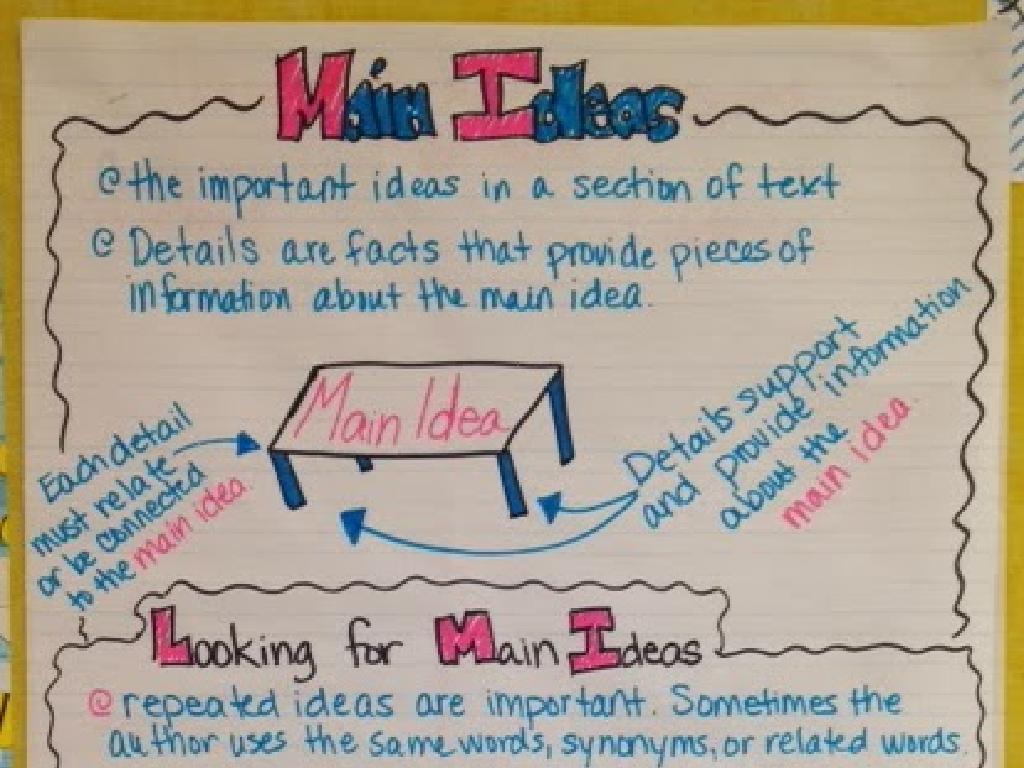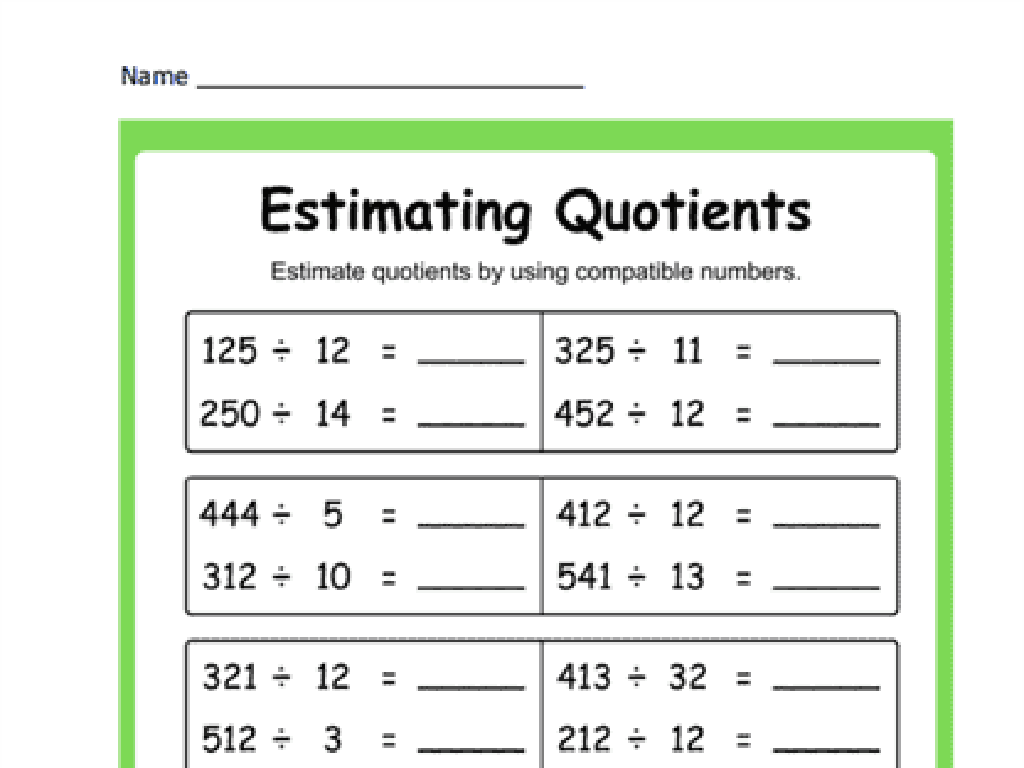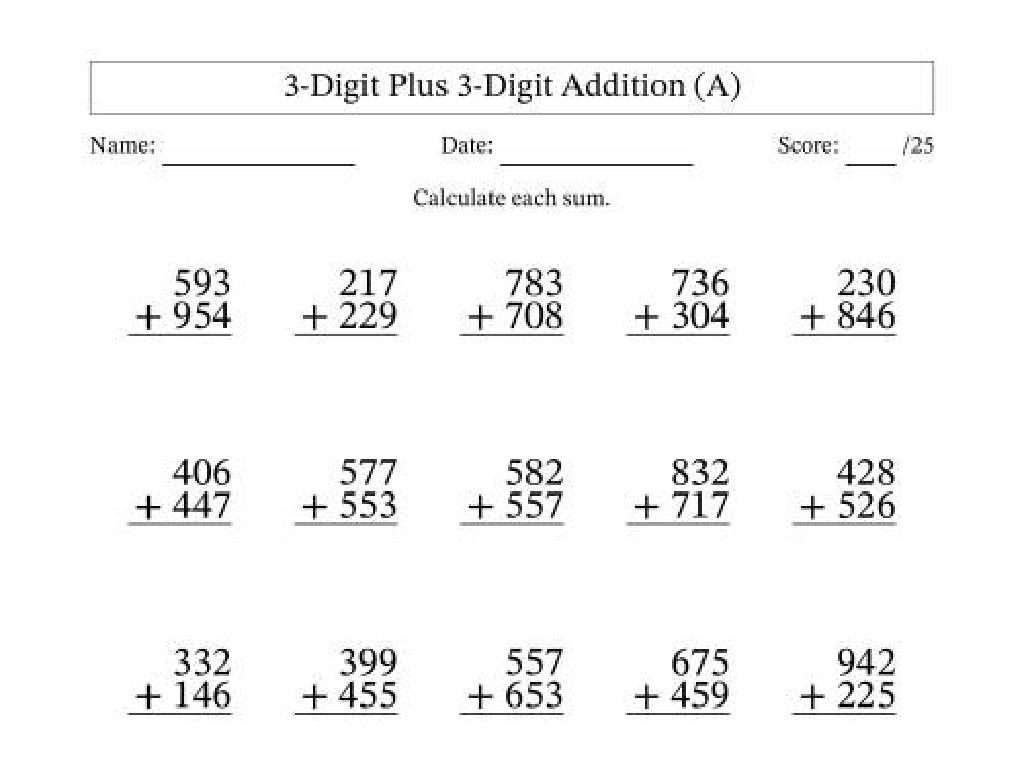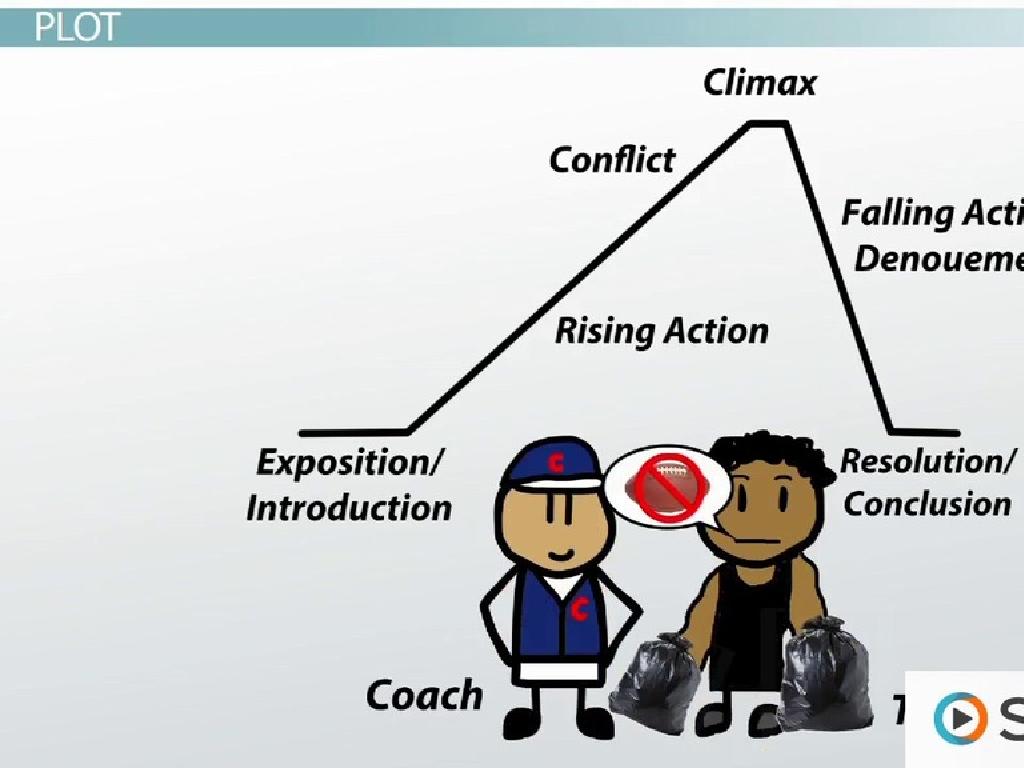Comparison Word Problems Up To 20: What Is The Larger Amount?
Subject: Math
Grade: First grade
Topic: Comparison Word Problems Up To 20
Summary: This first grade math presentation teaches students how to compare numbers up to 20 through fun, hands-on activities. Learners become Math Detectives as they solve comparison word problems, use number lines, and practice identifying the larger amount with familiar objects and stories. The lesson introduces comparison symbols and encourages collaborative problem solving, helping students master greater than, less than, and equal to concepts. These engaging exercises build foundational number sense and comparison skills.
Please LOG IN to download the presentation. Access is available to registered users only.
View More Content
Math Explorers: Becoming Math Detectives!
– Embrace your inner Math Detective
– Solve number mysteries up to 20
– Use clues to find hidden numbers within 20
– Learn comparing numbers
– Use symbols like >, <, = to compare two numbers
– Discover the larger amount
– Practice with examples: Is 15 or 18 larger?
|
In this class, we’re going to have fun with numbers by turning our students into Math Detectives. They will learn how to solve mysteries involving numbers up to 20. The focus will be on comparing two numbers and determining which one is larger. Introduce the greater than (>) and less than (<) symbols as tools for comparison. Provide examples and let the students practice with pairs of numbers to reinforce the concept. Encourage them to explain their thinking process to foster a deeper understanding. For activities, consider using number cards, interactive games, or group work where students can compare numbers and explain their reasoning to the class.
Comparing Numbers: Which is Larger?
– ‘Compare’ means finding differences
– Like finding out which cookie is bigger!
– We can compare size, length, amount
– Is a pencil longer than a pen? Does a jar have more cookies?
– Today’s focus: larger numbers
– We’ll use numbers to see which is bigger: 15 or 18?
– Practice with numbers up to 20
– We’ll use examples with toys and candies to learn!
|
This slide introduces the concept of comparison to first graders by relating it to everyday objects they are familiar with, like cookies and toys. The goal is to help them understand that comparing is about finding differences and determining which is larger or smaller. Emphasize that today, we’re focusing on comparing numbers to find out which one is bigger, using numbers they can count on their fingers or with objects up to 20. Encourage them to think about objects they often compare in size or amount. During the lesson, use visual aids and physical objects to demonstrate comparison, and provide plenty of practice examples for the students to work through.
Understanding ‘Larger’ in Math
– ‘Larger’ means having more
– Comparing two amounts
– Which number is bigger, 5 or 3?
– Example with candies
– If I have 5 candies and you have 3, who has more?
– Practice identifying ‘larger’
– We’ll look at different pairs of numbers and decide which is larger.
|
This slide introduces the concept of ‘larger’ to first graders in the context of comparison word problems. Begin by explaining that ‘larger’ means having more of something than someone else or something else. Use relatable examples, such as comparing the number of candies, to illustrate the concept. Encourage the students to participate by asking them to compare two different amounts and identify which is larger. Provide several examples and practice opportunities to ensure that students can confidently use the term ‘larger’ and understand its meaning in the context of basic arithmetic problems involving numbers up to 20.
Comparing Numbers in Stories
– Word problems are number stories
– Read the story with care
– Understand what the story is about
– Find and highlight the numbers
– Look for numbers up to 20 in the story
– Decide how to compare numbers
– Use words like ‘more’, ‘less’, or ‘equal’ to compare
|
This slide introduces students to the concept of comparison word problems within stories. Emphasize the importance of reading the problem carefully to understand what is being asked. Guide students to identify the numbers involved in the problem and to use comparison words to determine which number is larger. Provide examples such as ‘Tom has 5 apples, and Jerry has 8 apples. Who has more?’ to illustrate the concept. Encourage students to practice with similar problems and to use visual aids like number lines or counters to help them compare quantities.
Let’s Compare Numbers!
– Using a number line
– A number line helps us visually compare sizes of numbers.
– Numbers increase to the right
– Remember: the further right we go, the bigger the numbers get!
– Pointing to compare numbers
– We can use our fingers to point at two numbers and see which is bigger.
– Finding the larger amount
– Practice by choosing two numbers and deciding which one is larger.
|
This slide is designed to introduce first graders to the concept of comparing numbers using a number line. Emphasize that numbers increase in value as they move to the right on the number line. Demonstrate how to use a finger to point to numbers on the line and compare their sizes. Encourage students to practice with different pairs of numbers up to 20 to determine which is larger. Activities can include using physical number lines in the classroom, interactive whiteboard exercises, or paper handouts where students can draw arrows to the larger number. Reinforce the concept by asking students to explain their reasoning for which number is larger in each comparison they make.
Who Has More Balloons?
– Count Sam’s balloons
– Sam has 8 balloons
– Count Jen’s balloons
– Jen has 12 balloons
– Compare using a number line
– Place Sam’s and Jen’s balloons on the line
– Determine who has more
– Jen has more balloons than Sam
|
This slide introduces students to comparison word problems with a relatable example involving counting balloons. Start by counting the number of balloons Sam has, then do the same for Jen. Use a number line to visually compare the two amounts. This will help students understand that the number further to the right on the number line is the larger amount. Encourage students to articulate that Jen has more balloons than Sam. Reinforce the concept by asking students to draw their own number lines and balloons to solve similar problems. This activity will build their confidence in comparing numbers up to 20 and understanding the concept of ‘greater than’ and ‘less than’.
Practice Time: Comparing Numbers
– Solve problems with classmates
– Find and compare numbers
– Look for numbers in the problem and decide which one is bigger
– Use a number line for help
– A number line can show you which number is greater
– Determine the larger amount
|
This slide is designed for an interactive class activity where students will work together to solve comparison word problems. Encourage them to identify the numbers involved in each problem and use their critical thinking to determine which number is larger. Provide each group with a number line as a visual aid to help them compare numbers up to 20. This activity will reinforce their understanding of numerical order and comparison. As they work through the problems, remind them to discuss their thought process with their peers. Possible activities include comparing quantities of classroom items, using blocks to represent numbers, or drawing their own number lines on paper to visualize the comparison.
Class Activity: Number Detectives
– Become Number Detectives
– Find and count classroom objects
– How many books? Pencils? Find out!
– Compare amounts with a partner
– Is 5 greater than 3? Work with friends to compare.
– Determine the larger amount
– Use your counting skills to see which number is bigger.
|
In this engaging class activity, students will put on their detective hats and search the classroom for items to count. They will then pair up with classmates to compare the quantities of their findings and determine which is larger. This exercise helps reinforce the concept of comparison and number magnitude. Possible activities include comparing sets of crayons, books, or even the number of steps from the door to the chalkboard. Encourage students to use phrases like ‘greater than’ or ‘less than’ when comparing. This activity not only solidifies mathematical concepts but also promotes teamwork and communication among students.
Celebrating Math Detectives!
– Congratulations, Math Detectives!
– Mastered number comparison up to 20
– You can now tell which of two numbers is bigger, like 15 or 18
– Comparing shows the larger number
– Use symbols like >, <, = to compare
– Keep practicing your skills
|
Well done to all the students for learning how to compare numbers up to 20. This skill is important for understanding basic math concepts and for solving everyday problems. Remember to use comparison words like ‘greater than’, ‘less than’, or ‘equal to’ and their corresponding symbols. Keep practicing by looking for opportunities to compare numbers in real life, like counting toys, comparing ages, or measuring ingredients while cooking. Encourage the students to continue practicing at home with fun activities or worksheets.





